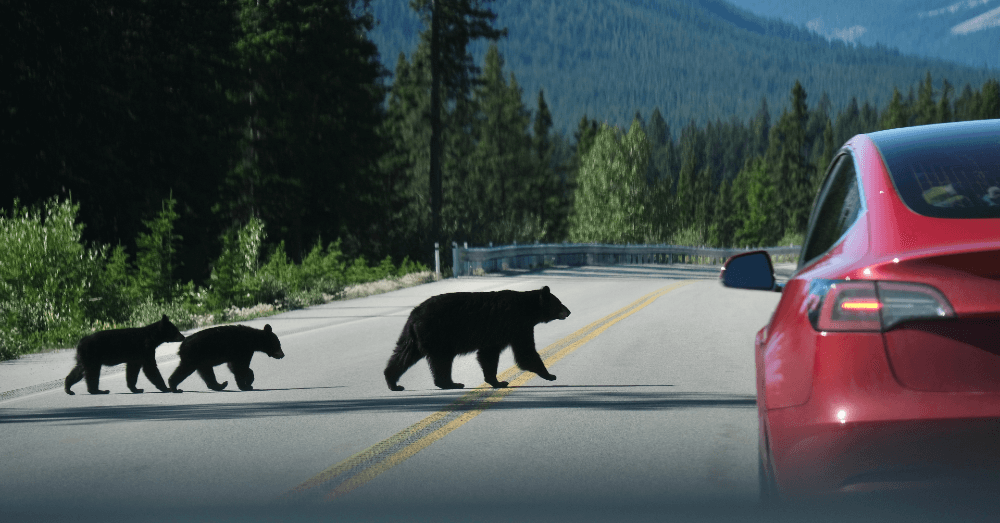Visiting parks around the country can be a wonderful experience, but your visit should also include some common-sense spring wildlife safety tips.
Spring has sprung, and as the trees and flowers begin to bloom and show their colors, many wild animals begin to emerge and bring young versions of themselves into the wild. This means protective mother animals, hungry predators who might have hibernated for the winter, and aggressive animals ready to strike. You can and should avoid contact with wild animals, but you’ll also want to employ some important spring wildlife safety tops and practices in your visits to various parks and outdoor areas.
Don’t honk at animals
Those roads you drive on weren’t here before animals. The landscape was once nothing but forests, plains, and wilderness where animals could roam freely. They don’t understand vehicles and roadways and how to get out of the way quickly. Honking at animals when they cross the road can cause serious problems, especially if you honk at large predatory animals. Many female bears spend time near roads for safety from male bears, but this can cause bear jams, which is a real thing.
Tread lightly and wear dark shoes
Some people love to attend sea turtle hatchling releases, which can be one of the most amazing experiences you’ll ever encounter. While attending these events, you need to be aware of some spring wildlife safety steps you should take to ensure the safety of the animals. First, it’s important to avoid walking on nests or animals. Second, make sure you don’t wear white shoes. White is the color turtles use to find their way to the ocean, and your white shoes could confuse them.
Don’t put animals in your car
You might have all the best intentions in the world, but nature can sometimes be cruel. Picking up animals and taking them to the ranger station in a park can lead to negative consequences and results. If you happen to hit an animal with your vehicle, and that animal is still alive, by all means, carry it to a local vet. Unfortunately, some animals are abandoned by their companions and will be left to die in the wilderness, which is the cruelty of nature.
Be careful around mountain goats
Strangely, mountain goats have been known to stalk hikers because they crave the salt in the sweat and urine of humans. This means an important spring wildlife safety tip is to avoid urinating within 100 feet of a trail and not leave your sweat-soaked gear unattended. There is a report of a goat goring a hiker and standing over him until he bled to death, and some goats will follow you. If you can’t get the goats to leave you alone, throwing rocks at them is an acceptable last resort.
Zoom lenses are great
Keeping your distance from wildlife is always a smart tip, but when you visit national parks or nature trails, you want to enjoy the wildlife in the area, but from a distance. One of the best ways to do this is to have a zoom lens for your camera or smartphone. These lenses help you capture the images you want without coming near animals. People are injured by bison almost every year in Yellowstone because they try to take pictures and get too close to animals in the process.
Bear spray could be necessary
The national parks in the United States allow visitors to explore habitat areas of large predators on foot and independently, but this can be problematic. If you’re exploring an area where bears are known to roam, you need bear spray. This is one of the most important spring wildlife safety tips for going into these areas. Some people have been mauled to death by bears because they weren’t using bear spray.
Don’t feed the animals
Some animals have learned to beg for food, and they look cute and innocent when doing so, but feeding them can be bad for people and the animals. Coyotes and bears have been known to become aggressive and revisit campsites to get at the food that campers carry with them. Ravens have also been known to try and get at human food as well. It’s important that you don’t feed the animals when visiting parks and take precautions to keep your food waste away from animals.
These spring wildlife safety tips are meant to protect you and the wildlife you might see when you visit parks and nature areas during the warmer months of the year. Where will you spend your spring nature vacation?

